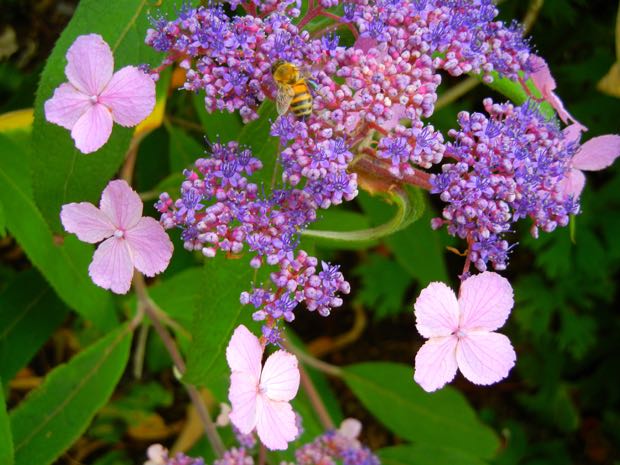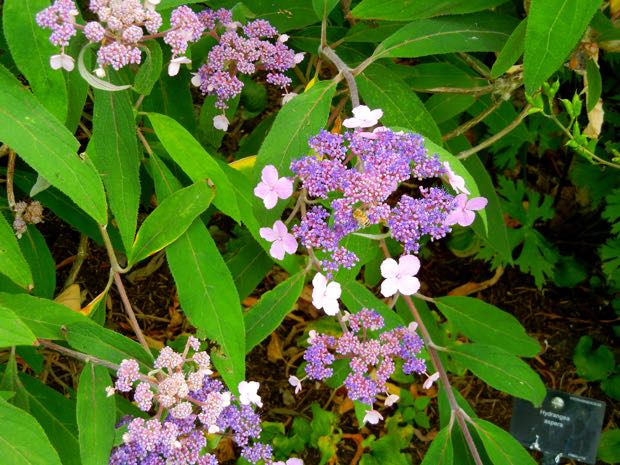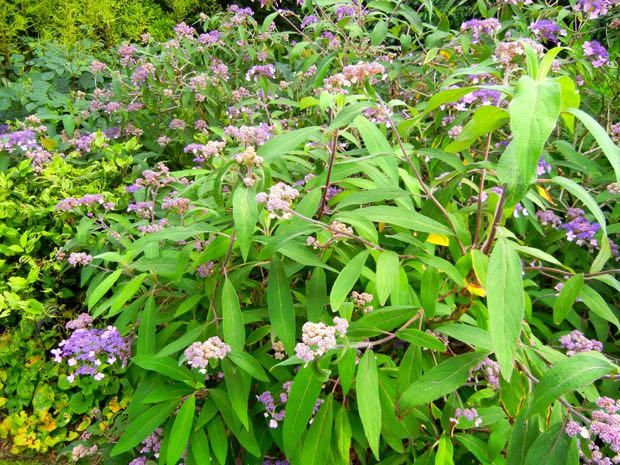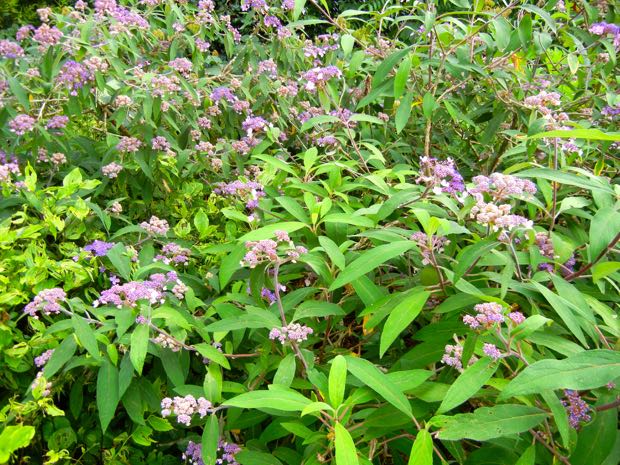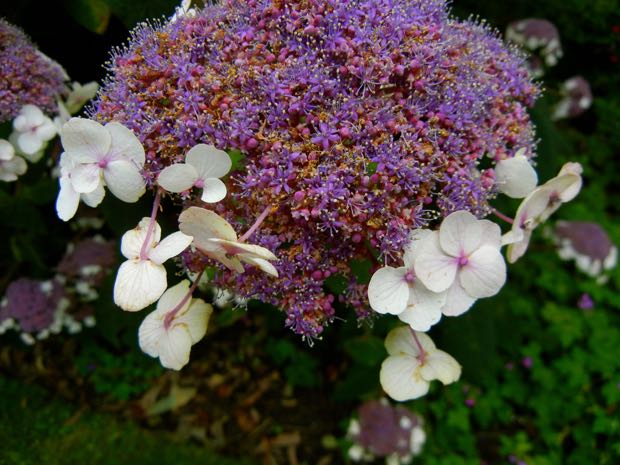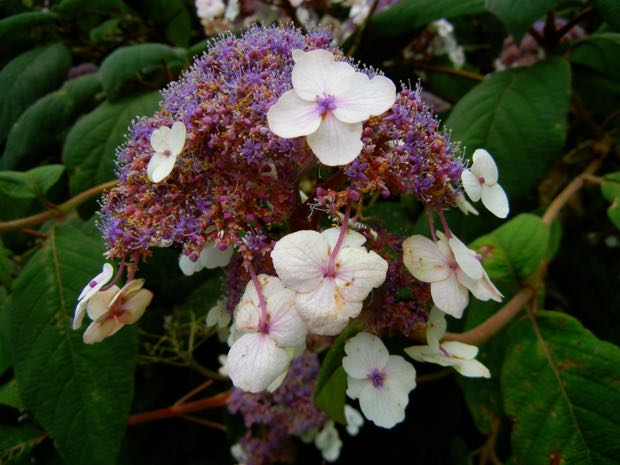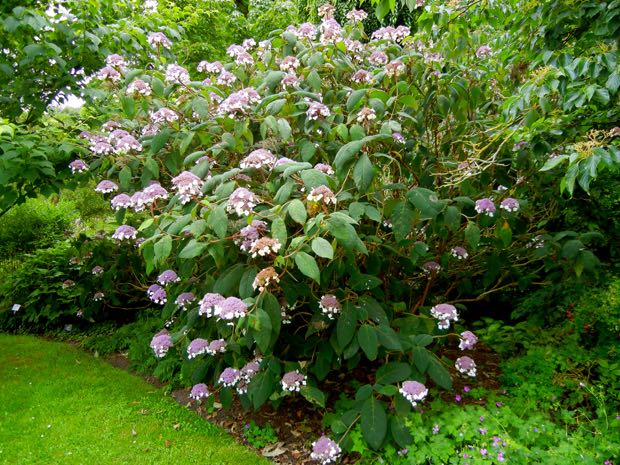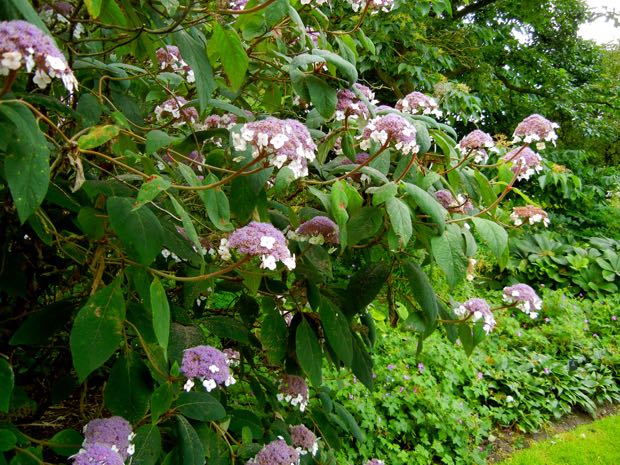Hydrangea aspera var. macrophylla: A Delightful Addition to the Garden
Background: Hydrangea aspera var. macrophylla, commonly known as Large-leaved Hydrangea or Rough-leaved Hydrangea, is a captivating flowering shrub that belongs to the Hydrangea family or Hydrangeaceae. This variety is highly regarded for its large, textured leaves and beautiful clusters of blossoms. Native to regions of Asia, including China, Bhutan, and the Himalayas, this plant has captured the hearts of gardeners worldwide with its unique characteristics and ornamental value.
Characteristics: Hydrangea aspera var. macrophylla is characterized by its impressive foliage and attractive flowers. The leaves are generously sized, typically dark green, and possess a rough, coarse texture, lending the plant its common names. These large leaves create a bold and dramatic backdrop in the garden, adding depth and texture to the overall landscape.
The flowers of Hydrangea aspera var. macrophylla are a true spectacle. They form in clusters known as corymbs, with each cluster comprising numerous delicate blooms. The flower colors range from shades of pink and purple to captivating blues, depending on the pH of the soil. Acidic soils tend to produce blue flowers, while alkaline soils yield pink or purple hues. This color-changing feature makes Hydrangea aspera var. macrophylla a fascinating plant to cultivate and observe. Hydrangea aspera can grow to 3m or 10ft high.
Native Origin and Family: Hydrangea aspera var. macrophylla is native to Asia, specifically China, Bhutan, and the Himalayas. Its natural habitat includes woodland areas and mountain slopes, where it thrives in cool and temperate climates. As a member of the Hydrangeaceae family, it is related to other popular hydrangea varieties, such as Hydrangea macrophylla and Hydrangea serrata.
Cultivation of Hydrangea aspera var. macrophylla:
Cultivating Hydrangea aspera var. macrophylla requires providing it with the right growing conditions to ensure its optimal health and vibrant blooms. Here are some key aspects to consider:
Sunlight: This variety of hydrangea thrives in partial shade to full shade. While it can tolerate some morning sunlight, it is best to protect it from intense afternoon sun, as it may scorch the leaves. Planting it in a location with filtered or dappled shade is ideal.
Watering: Hydrangea aspera var. macrophylla appreciates consistent moisture in the soil. It is important to water it regularly, especially during dry spells, to keep the soil evenly moist. Avoid overwatering, as waterlogged conditions can lead to root rot. Mulching around the base of the plant can help retain soil moisture.
Soil: The soil should be well-drained, fertile, and rich in organic matter. Hydrangea aspera var. macrophylla thrives in loamy soils but can adapt to various soil types. It is beneficial to amend the soil with compost or well-rotted manure before planting to enhance its nutrient content and drainage.
Pest and Disease: This variety of hydrangea is generally pest and disease resistant. However, it can be susceptible to common hydrangea pests such as aphids and spider mites. Regular inspection of the plant and appropriate pest control measures, if necessary, can help maintain its health. Additionally, providing good air circulation around the plant and avoiding overhead watering can help prevent foliar diseases like powdery mildew.

